Learn Hiragana - Articles and Images
Learning Hiragana: The Foundation for any Japanese language learner
There’s good news and bad news with learning Japanese. The bad news is there’s three alphabets, two with about 50 characters, and a third, Kanji, with 2-3,000. The good news is the first alphabet you learn, Hiragana, has sounds that are repeated for the rest of the alphabets. So once you’ve mastered Hiragana, you should be able to pronounce all Japanese sounds going forward. Not only pronunciation, but Hiragana is also an alphabet that any Japanese word can be written in. So to summarize, once you’ve learned Hiragana, you can speak, write, and read Japanese!
Well, not exactly, to add a disclaimer all Japanese periodicals, tv shows, road signs, etc. are written in all three alphabets: Hiragana, Katakana, and Kanji. In order to become fluent a Japanese language learner will have to learn all three of these alphabets, in the order: Hiragana, Katakana, and then Kanji. (Or, Kanji characters can be learned along with Katakana, but Hiragana must be mastered first) However, once someone who’s learning Japanese has learned Hiragana, they can write full sentences and even paragraphs to a Japanese speaker and he or she would completely understand. They can also read articles or any Japanese periodical, but it would have to be translated all into Hiragana. For example, some early children’s books for K-1st graders are written all in Hiragana.
Hiragana comes in bunches of 5 characters. Each character in Japanese has a vowel sound attached to it, as you’ll recognize by looking at the below sample sounds. It actually makes for really great rap music: it’s probably one of the easiest languages to rhyme in. The sounds also repeat, once you learn perfectly how the first bunch of 5 characters sound, then the remaining 9 bunches of 5 characters are just variations off the initial sounds.
In today’s article we’ll focus on the very first 5 characters, again as mentioned earlier the pronunciation of these characters is key: once learned every sound after it will just be a variation on these sounds (note: with a few exceptions). The first five characters with pronunciations added are below:
The rhyme describes what every college graduate without a job goes through. He or she might want to live away from home, but they can’t afford food! Katrina Needs Food Hates Home (this is of course not an official rhyme and if you think of something more catchy please let me know!) The vowel in each word reflects each sound of the first bunch of 5 characters. Katrina actually has three vowel sounds, but the first and last a are the “a” sound for the Japanese character: あ.
Equally important along with the pronunciation is the stroke order for each Hiragana character. When writing each character, it is important to not take your pencil off the paper until each stroke is completed. With the first character あ, for the circle make sure to start and then curve around with your pencil, without stopping and taking it off the paper. いand うare self explanatory. For え、the directions on the second stroke are as follows: left to right, right corner to left corner, then trace back up a little bit and curve the tail. For お and the second stroke, it goes top to bottom, then curve around for the final touch.
Now you’ve hopefully learned the beginning 5 bunch of Hiragana. This article will continue to explain in detail the following 9 bunches of Hiragana, but it’s important to master both the concepts and the reading, writing, and pronunciation of the first 5 bunch before moving forward. Pat yourself on the back, learning Hiragana is the first step to learning this wonderful and fascinating language of Japanese.
Learning Hiragana: The Second and Third Row of Characters
Learning the Japanese language can seem intimidating, so many characters, so little time. The good news is learning the first alphabet, Hiragana, is actually quite simple. There are only 52 characters that cover the entire phonetic structure of the Japanese language. If you’re reading this article and have not yet read “Learning Hiragana: The Foundation for any Japanese Language Learner” then please read that article first. This article is an extension of the first five sounds, A – I – U – E – O, and will expand to include “KA KI KU KE KO” and “SA SHI SU SE SO”.
In the first article, remember the pronunciation for main vowel sounds of ”A I U E O” is “Katrina Needs Food Hates Home”. Those sounds will be applied to the next two rows of characters as well. Without further ado, let’s introduce the next two rows of the alphabet, with stroke order included:
The next row of characters have the same vowel sound, just add a S or Shi in front of them, as below:
So there are the next two rows of characters for Hiragana. Please when learning Hiragana, make sure to sound out the characters, but also write them five times each. When writing Hiragana it’s important with each stroke not to take your pencil off the paper, this is especially apparent when writing “SO”. Also pay special attention to stroke order, and memorize how each character is written out. Learning Hiragana is the first step to becoming proficient in Japanese, pat yourself on the back, you’ve memorized 15 characters so far!
Learning Hiragana: Mastering the Alphabet and Learning the 4th and 5th rows
This is the third installment in learning the Hiragana alphabet, if you have not read the first two articles on “Learning Hiragana” please refer to those articles first. Up till now, you’ve learned 15 characters, or have you? Part of learning Hiragana is not just sitting down and writing them 5 times, but actually learning to recognize the characters. In a world where internet is taking over handwritten letters, the focus when learning Hiragana should be more and more on being able to read and recognize.
Here’s a quiz for recognizing the first 15 characters:
かお
すし
ぜいき
あか
すう
Answers will be at the bottom of the article. Without further ado let’s introduce the next two rows of characters, remembering that their pronunciation will follow the “Katrina Needs Food Hates Home” model.
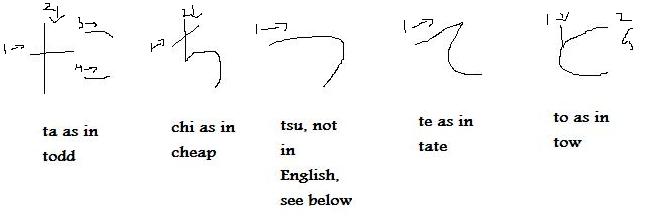
- “Tsu” sounds like Two in English, but there needs to be a plural s put in between the word, like the s sound in “choose”. Or, just do a slight “t” sound, like “ta” but without the vowel sound of the “a” and then the sound for su, which sounds like “sue”.

So in Learning Hiragana there are 5 steps of characters. The first two articles covered 15 characters, this article represented the third step with 10 more characters. When learning please remember to write each character 5 times, and then practice reading the Hiragana. The key is to be able to recognize them and learn the pronunciation.
(Answers to the above)
Ka – o (Face)
Su – Shi
Se – I – ki (Century)
A – ka (Red)
Su – u (Number)
Learning Hiragana, Mastering the Technique of Memorization (6th and 7th rows) This article is the 4th installment for learning Hiragana. By now you should be quite familiar with the rows from あいうえお かきくけこ さしつせそ たちつてと なにぬねの. You should be able to at least recognize those and read them in succession. The key to memorizing is repeating the rows out loud in order, again and again. Also reading words in Hiragana helps, and after the Hiragana articles are complete we’ll also publish a practice reading article to master memorizing the characters. Without further ado let’s introduce the 6th and 7th rows of Hiragana:

In the middle character, “Fu”, please note this is sometimes written as “Hu” also. It might be difficult to decipher from the character, but the stroke order goes #1 top middle #2 center #3 left #4 right.
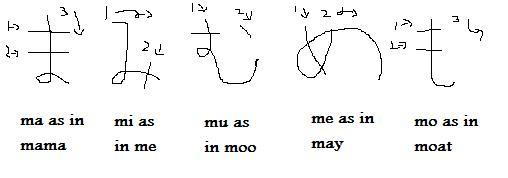
Up to this point you’ve learned 35 characters, congratulations! Afterwards we’ll publish one more article with 11 more characters, afterwards you’ll have the entire Hiragana alphabet at your disposal. When you’ve learned the entire Hiragana alphabet, you’ve learned all the phonetic sounds there are in Japanese. Every sound afterwards is just a variation of what you’ve already learned.
Learning Hiragana: Finishing Up the Final Rows
Learning Hiragana is a crucial part of becoming a speaker of the Japanese language. Not only does the alphabet provide you with all the pronunciation sounds you’ll have to learn in Japanese, but also gives you an opportunity to be able to read the Japanese language. Keep in mind there’s also Katakana and Kanji left to learn, but your teacher can potentially translate everything into Hiragana for you! As this is the last article for learning Hiragana, let’s test the Hiragana you’ve learned up till now:
なに
かたい
ふつう
たべもの
のみもの
さしみ
Can you read the above words? Please try sounding them out, if not you might want to review past articles before progressing to the final stages of learning Hiragana. Without further ado, the final rows for Hiragana are:
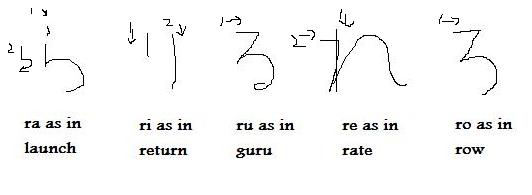
For “Ru” and “Ro”, please note the characters are very similar. Ru just has a circle added at the bottom.
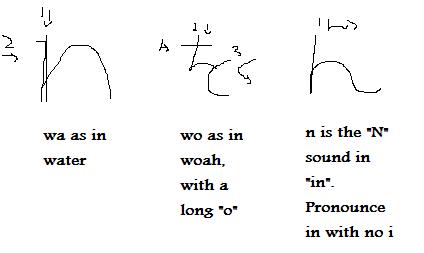
For “Wo”, please note it’s just a long o sound, but with a slight w sound. The sound really doesn’t exist in English, same with the “n” sound. Just remember, pronounce “in” without the vowel sound.
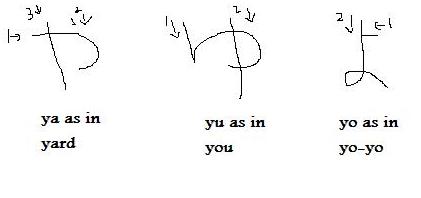
This concludes our learning Hiragana series, with the final 10 characters added to your repertoire of Hiragana. Hopefully you’ve learned some helpful tips about writing and recognizing the Hiragana, and once you’ve mastered this alphabet you’ve mastered the first step to learning Japanese. Congratulations! Answer Key
なに nani – what
かたい katai – tight
ふつう - futsuu – regular
たべもの – tabemono – food
のみもの – nomimono – drink
さしみ – sashimi